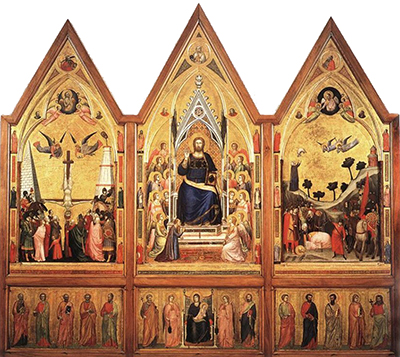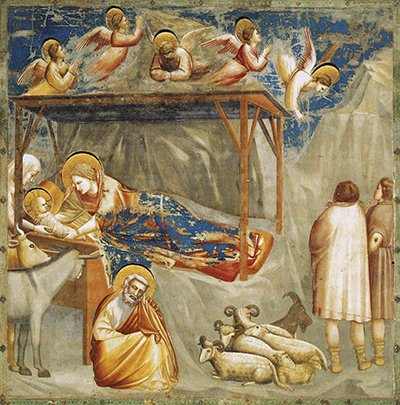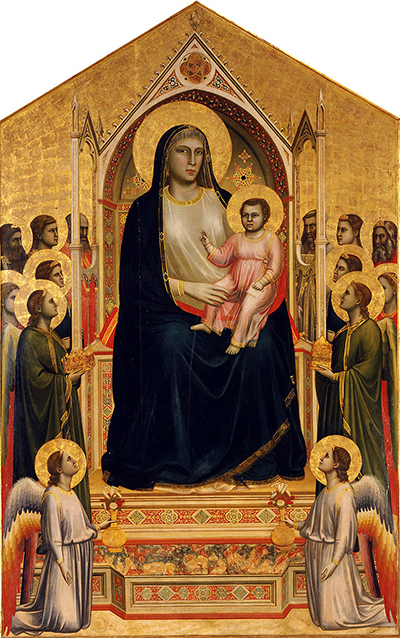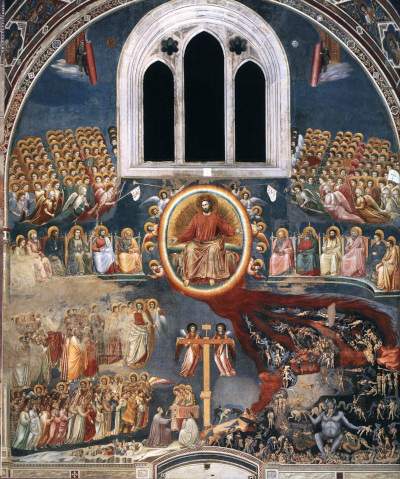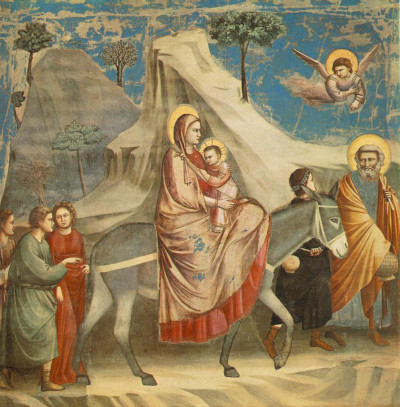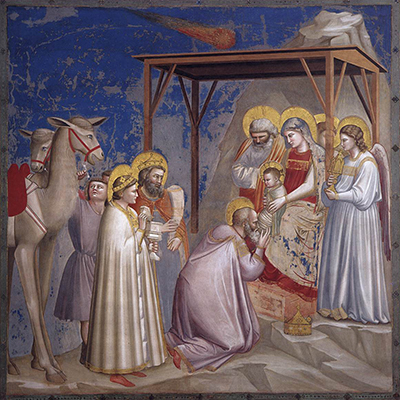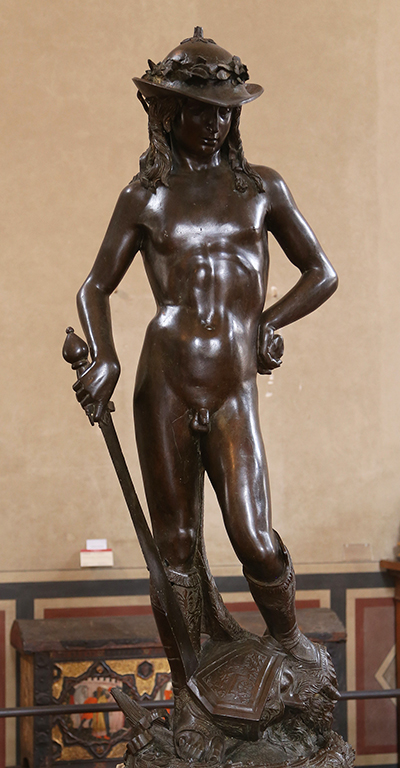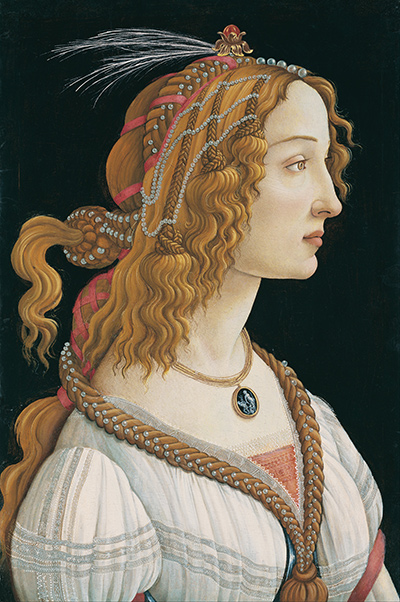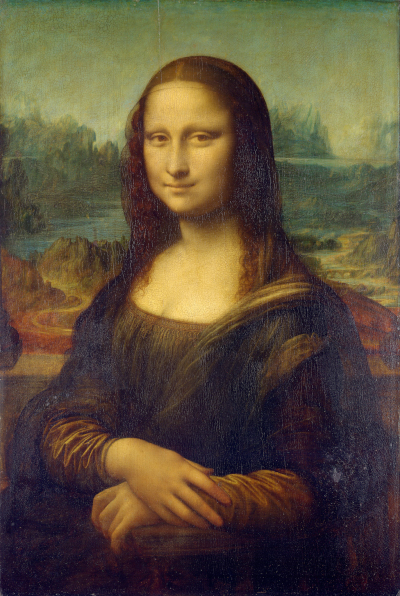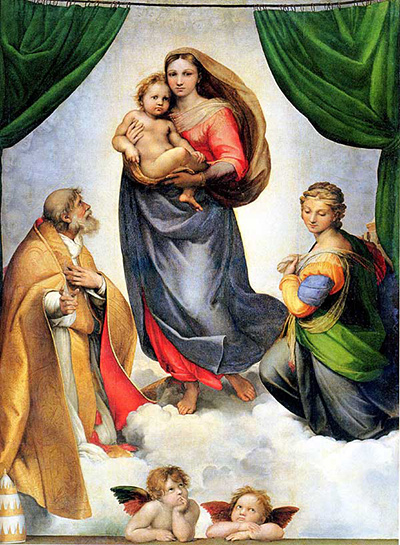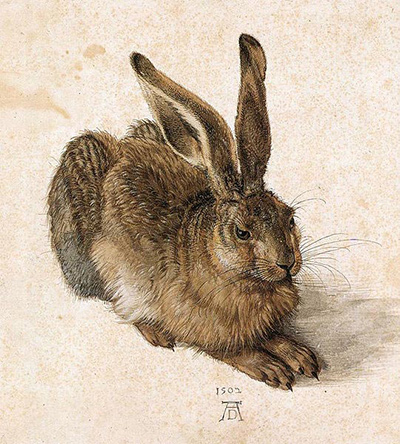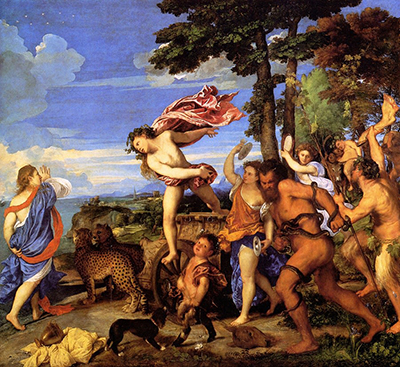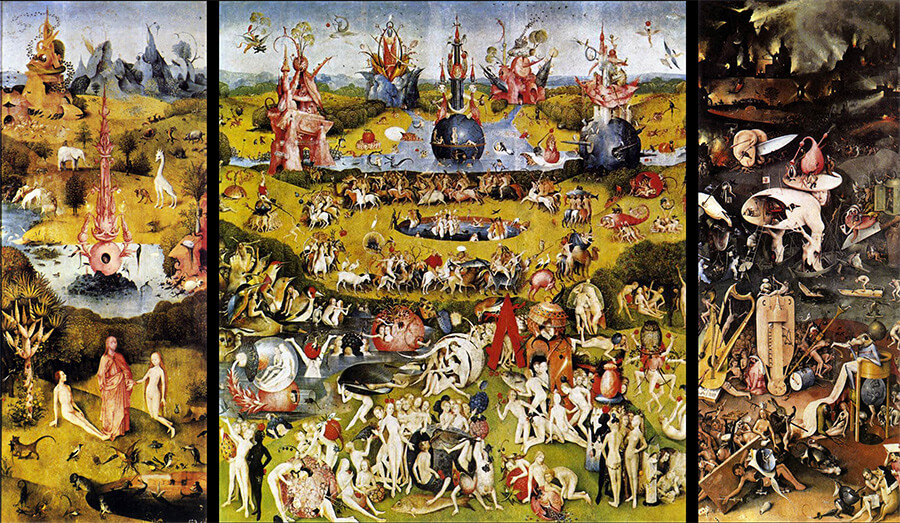St Francis Receiving the Stigmata is a fresco by Giotto from around the end of the 13th century which would eventually make its way to the Louvre in France.
Painting Explained
The overall artwork features scenes from the life of St Francis of Assisi, with his receipt of the Stigmata being the larger piece and from where the overall project received its title.
The saint is shown praying on Mount Alverno whilst Christ appears from the right hand side. Christ is wounded, through which light reflects on the saint below, surprising him. The light is emitted directly from his injured hands and feet, creating a diagonal direction of lines towards the saint. Saint Francis raises his hands in surprise.
The artist then decorates the background with his rocky landscapes and touches of architecture which featured in so many of his paintings.
The three items below, known as predellas, cover the dream of St Francis supporting a church about to collapse, the pope approving the rule of the Franciscans and across on the right is the saint preaching to birds, to whom God's path should also be followed.
Giotto completed a large amount of work in Assisi, covering elements of both the upper and lower church, including a series on St Francis. For the artwork shown here, he would cover the saint for a church in Pisa. This delightful piece is over three metres in height and makes use of large amounts of golden leaf paint, helping it to make a great impact.
This beauty attracted French interest and the item was taken without permission and gifted to the Louvre in France, along with a number of other notable items of Italian art. Over time, many have been returned, but St Francis Receiving the Stigmata remains in France and is one of the few Giotto paintings to be on display outside of the artist's native country.
Supporting Predellas
A predella sits at the bottom of the artwork, featuring three small portraits that aim to support the larger composition that sits above. This technique of placing several smaller frescoes below a much larger one can be seen in several other Giotto paintings and was also common in other Renaissance artist's oeuvre, including Fra Angelico.
The purpose of predellas was to allow an artist to expand upon a theme, normally related to the Bible, but without distracting too much from the main artwork. This is similar to the use of side panels in a triptych, but predellas would be smaller and more akin to a pattern of paintings that connect to the same main theme.
Attribution
Giotto also produced several triptychs as an alternative way to laying out related themes as part of an adjoined series. There is little documentation on this piece compared to several others but the general conscencus amongst art historians is that this was certainly the work of Giotto, perhaps with the support of his highly trained studio.
Giotto gave this piece his typical signature (Opus Iocti Florentini), but even with that some had earlier doubted whether it was truly his work or not. This was an artist who preferred to sign the frame rather than fresco itself. It is now standard practice to place one's signature in the bottom left or right corner of a canvas.
Influence of Giotto
Giotto would play a significant role in bridging the gap between art of the Middle Ages and encouraging the future styles found in the Italian-led Renaissance. He was one of a number of artists whose work would influence and inspire those that followed throughout the various stages of the Renaissance era. Related artists who also played a role in developing Italian and European art in or around this time included Masaccio, Annibale Carracci, Giovanni Bellini, Andrea Mantegna and Gian Lorenzo Bernini.
Related Video
More Renaissance Artists



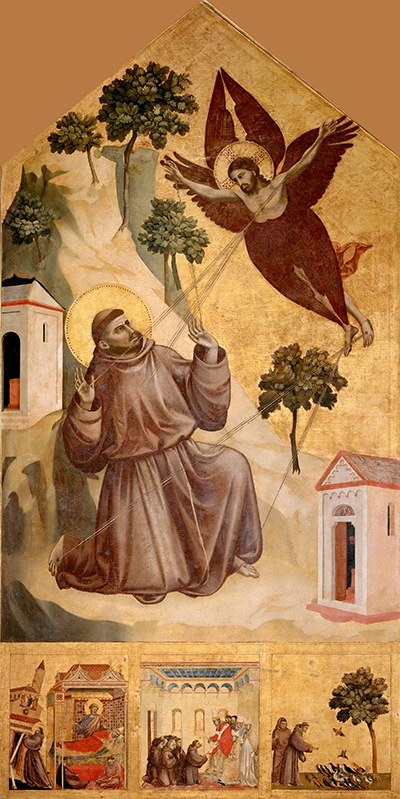
 Giotto.jpg)
 Giotto.jpg)
